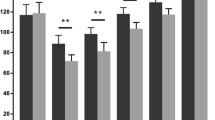Abstract.
The subvastus approach for total knee replacement was compared with the standard medial parapatellar approach in terms of postoperative knee scores and quadriceps strength. Two groups of patients with similar characteristics were formed: the first group consisted of 12 knees of 9 patients who were implanted via the medial parapatellar approach, and for the second group the subvastus approach was used in 10 knees of 10 patients. The groups' knee scores and quadriceps strength were compared preoperatively and postoperatively at week 6, months 3 and 6. The knee scores improved similarly in both groups, but the change was more pronounced in the subvastus group. Quadriceps strength was greater in the subvastus group at postoperative week 6, but there was no significant difference between the groups in months 3 and 6. It was concluded that although the subvastus approach offers greater quadriceps strength in the early postoperative period, it has no significant advantage in this aspect over the medial parapatellar approach.
Similar content being viewed by others
Author information
Authors and Affiliations
Rights and permissions
About this article
Cite this article
Cila, E., Güzel, V., Özalay, M. et al. Subvastus versus medial parapatellar approach in total knee arthroplasty. Arch Orthop Trauma Surg 122, 65–68 (2002). https://doi.org/10.1007/s004020100319
Received:
Issue Date:
DOI: https://doi.org/10.1007/s004020100319




